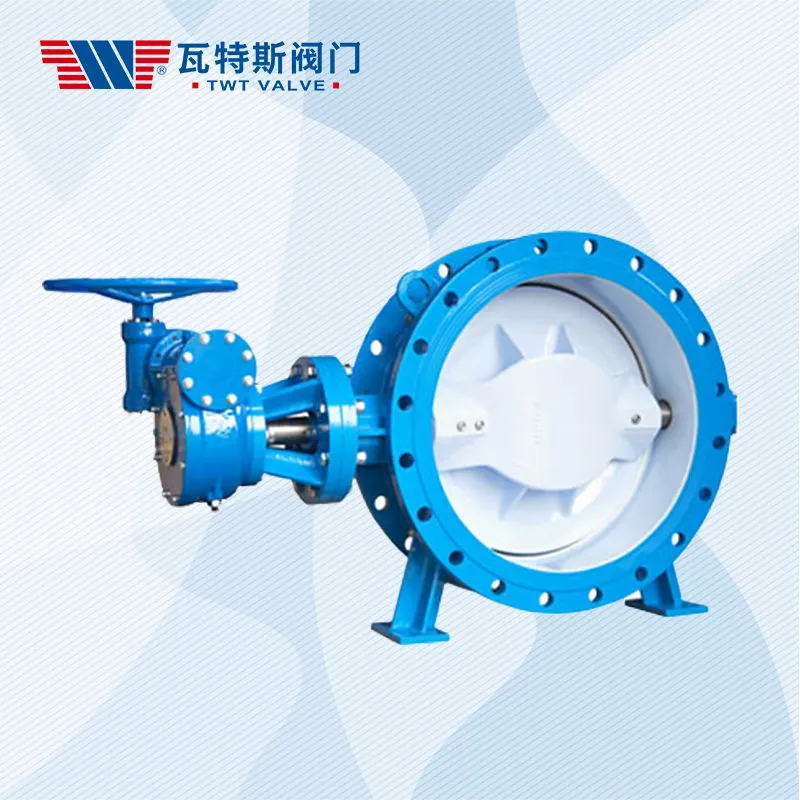Yes, soft sealing butterfly valves do have maintenance and lubrication requirements to ensure their continued performance and longevity. Proper maintenance helps prevent wear and tear, reduces the risk of leaks, and ensures smooth operation.
Here are some common maintenance and lubrication considerations for soft sealing butterfly valves:
- Regular Inspection: Periodically inspect the valve and its components for signs of damage, wear, or corrosion. Look for leaks, visible wear on the sealing elements, and the condition of the valve body.
- Cleaning: Keep the valve and its surroundings clean to prevent foreign particles from entering the valve, which can cause damage or interference with its operation.
- Lubrication: Soft sealing butterfly valves may require lubrication of the stem and bearing components to ensure smooth and reliable operation. The type of lubrication required depends on the valve design and manufacturer’s recommendations.
- Sealing Element Inspection: Check the condition of the soft sealing elements, such as the elastomer or rubber seat, for signs of wear, tearing, or deterioration. Replace the sealing element if it shows significant damage or degradation.
- Actuator Maintenance: If the valve is actuated (electric, pneumatic, or hydraulic), perform regular maintenance on the actuator, including checking for proper calibration and functionality.
- Tightening Bolts: Periodically inspect and tighten any bolts or fasteners to maintain the integrity of the valve’s assembly. Be cautious not to over-tighten, as this can cause damage.
- Preventative Repairs: Address minor issues promptly to prevent them from developing into more significant problems. Repair or replace components as needed to ensure the valve’s reliability.
- Operating Torque: Keep track of the operating torque required to open and close the valve. Any significant increase in torque may indicate a problem with the valve or its components.
- Replacement Parts: Ensure that replacement parts, such as sealing elements, stem seals, or O-rings, are readily available in case repairs are necessary.
- Service Intervals: Follow the manufacturer’s recommended service intervals and procedures for the specific soft sealing butterfly valve model. These recommendations may vary based on the valve’s design and materials.
- Safety Procedures: When conducting maintenance, adhere to safety procedures, and ensure that the valve is properly isolated from the system to prevent accidents or damage.
- Documentation: Keep records of maintenance and repairs, including dates, details of work performed, and any replacement parts used. This documentation helps track the valve’s history and can be valuable for future maintenance.
- Professional Assistance: If maintenance or repairs require specialized knowledge or skills, consult with qualified professionals or technicians to ensure the work is carried out correctly.
The specific maintenance and lubrication requirements may vary depending on the manufacturer, the valve’s design, and the application. Therefore, it’s essential to refer to the manufacturer’s documentation and guidelines for your particular soft sealing butterfly valve to ensure proper maintenance and care.
How is a soft sealing butterfly valve installed and operated?
Installation and operation of a soft sealing butterfly valve involve specific steps and procedures to ensure proper functionality and effective control of fluid flow.
Here’s how a soft sealing butterfly valve is typically installed and operated:
Installation:
- Preparation: Ensure that the valve and associated piping system are clean and free of debris, dirt, or foreign materials that could affect valve performance.
- Valve Orientation: Position the valve in the desired location in the pipeline, making sure it is properly aligned with the flow direction. The arrow on the valve body may indicate the recommended flow direction.
- Flange Connections: Connect the valve to the pipeline using flange connections. Tighten the bolts evenly and gradually to ensure a proper seal. soft sealing butterfly valve Use appropriate gaskets to prevent leaks.
- Fastening: Fasten the valve to the flange or pipe using the provided bolts or stud bolts. Follow the recommended torque specifications to achieve a secure and leak-free connection.
- Test for Leakage: After installation, conduct a leakage test to ensure there are no leaks around the valve body, flanges, or connections. Perform this test before operating the valve.
Operation:
- Open Position: To open the soft sealing butterfly valve, rotate the valve handle or actuator in a counterclockwise direction (typically a 90-degree turn). This allows the disc to pivot away from the flow path, enabling fluid to pass through.
- Close Position: To close the valve, rotate the valve handle or actuator in a clockwise direction, causing the disc to pivot back and block the fluid flow.
- Visual Indicator: Soft sealing butterfly valves often have a visual indicator on the top of the valve, which shows the position of the disc (open or closed). This allows operators to determine the valve’s status at a glance.
- Actuation: In some applications, soft sealing butterfly valves may be actuated using electric, pneumatic, or hydraulic actuators for remote or automated control. The actuator is connected to the valve and controlled externally.
- Partial Opening: Soft sealing butterfly valves can be partially opened to regulate flow. The degree of opening can be adjusted by turning the valve handle or actuator to a specific position between fully open and fully closed.
- Cautions: When operating the valve, apply smooth and controlled force to avoid abrupt movements that could damage the valve or create water hammer effects in the piping system. Do not over-tighten or over-torque the valve, as it may lead to damage or leaks.
- Maintenance: Regularly inspect the valve for signs of wear, corrosion, or damage. Lubricate the stem and bearing components as needed to ensure smooth operation. Follow the manufacturer’s recommendations for maintenance intervals and procedures.
- Safety: Always follow safety protocols and use appropriate personal protective equipment when operating or servicing the valve. Ensure that the valve complies with any safety and regulatory requirements for your specific application.
Proper installation and operation of a soft sealing butterfly valve are essential to maintain its functionality and prevent leaks. Regular maintenance and adherence to safety guidelines are crucial for the long-term reliability of the valve in fluid control applications.
